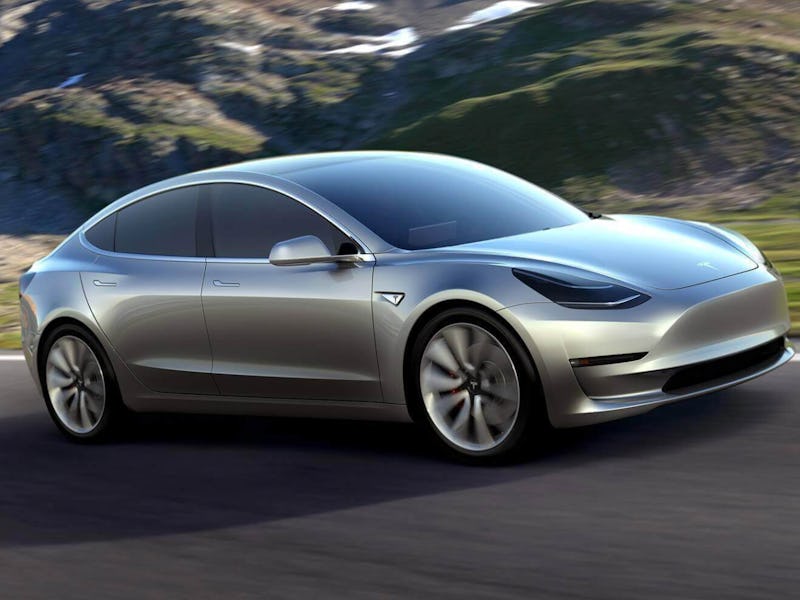Tesla has started producing “2170 cell” batteries that will be used in the upcoming Model 3 vehicle, according to the company’s Chief Technical Officer JB Straubel. The batteries, so named because they measure 21mm by 70 mm, have been described by CEO Elon Musk as “the highest energy density cell in the world, and also the cheapest.”
Straubel’s comments were made at the Midwest Renewable Energy Association’s 28th Annual Energy Fair in Wisconsin on Saturday and covered by Electrek. At the event, Straubel said that production of the necessary cells was starting “right now” at the Gigafactory in the Nevada desert.
The Model 3, set to enter full production next month, is a major moment for the company, as it will help the company reach a far broader audience for its electric vehicles. Its $35,000 asking price is far below the company’s current cheapest vehicle, thanks to a combination of cost-cutting measures and advancements in battery production, like the 2170 cell.
Volume wise, the new cells are around 50 percent larger than the 18650 cells Tesla used in previous vehicles, so named because they measure 18mm by 65mm. The 2170 cell can provide around double the capacity of the previous cell, at around 6,000 mAh.
Tesla has already been producing 2170 cells at the Gigafactory since January, but those cells used nickel manganese cobalt oxide chemistry, which the company uses in the latest Powerwall and Powerpack non-vehicle products. For its cars, Tesla uses nickel cobalt aluminum oxide chemistry, and it’s this variant of 2170 cell that has now entered production.
Tesla has worked hard to bring battery costs down, with the company claiming it has already reached prices below $190 per kilowatt-hour, even before the 2170 cell has entered full production.
Elon Musk describing the Tesla Gigafactory
The Gigafactory is central to the production of 2170 cells. When complete, the building will occupy a staggering 5.8 million square feet of space and produce batteries “faster than bullets leaving a machine gun,” according to Musk. The factory is expected to reach an annual production capacity of 35 gigawatt-hours worth of storage. Based on these stats, 100 Gigafactories would be plenty to produce enough storage to transition the world onto renewable energy. Tesla is already planning three new Gigafactories, set to be unveiled laster this year.
The company has worked hard to innovate in the battery sector, but specific details are scarce. Last month, the public caught a rare glimpse of the steps Tesla is taking when Dalhousie University’s Jeff Dahn explained how he worked with the company to improve the lifespan of its batteries. The team discovered an aluminum coating that could reduce battery degradation over time, claiming that it’s possible for batteries that use this new technology to last for up to 20 years.
